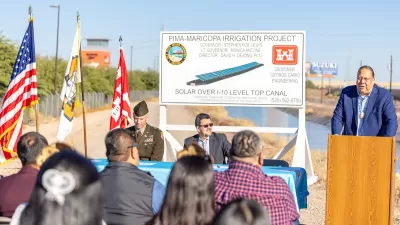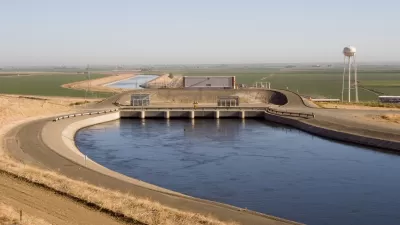Low-tech Magazine details the history of the trolley canal boat, a staple of the past for transporting goods down canals and waterways. Could something like this make a comeback?
The article documents all the different modes of pulling canal boats along, from horses to electrical or steam towing.
From Low-tech Magazine:"Of course, canal barges are much slower than trucks or trains. But, if they could haul cargo for almost nothing, it would still be an economical choice for many goods. This advantage would grow if oil prices would rise. Many abandoned canals could be put in use again, and even new ones could be built.
Almost all methods above were designed for use on very shallow, trapezoidal "low-tech" canals, which were only 2 metres (6.5 feet) deep at the centre, and much less on the sides (see picture below). These are not public works like the Panama Canal which would take decades and require thousands of workers (or energy-guzzling machines) to build. This is something that might even be done on a community level."
FULL STORY: Trolley canal boats

Study: Maui’s Plan to Convert Vacation Rentals to Long-Term Housing Could Cause Nearly $1 Billion Economic Loss
The plan would reduce visitor accommodation by 25,% resulting in 1,900 jobs lost.

North Texas Transit Leaders Tout Benefits of TOD for Growing Region
At a summit focused on transit-oriented development, policymakers discussed how North Texas’ expanded light rail system can serve as a tool for economic growth.

Why Should We Subsidize Public Transportation?
Many public transit agencies face financial stress due to rising costs, declining fare revenue, and declining subsidies. Transit advocates must provide a strong business case for increasing public transit funding.

How to Make US Trains Faster
Changes to boarding platforms and a switch to electric trains could improve U.S. passenger rail service without the added cost of high-speed rail.

Columbia’s Revitalized ‘Loop’ Is a Hub for Local Entrepreneurs
A focus on small businesses is helping a commercial corridor in Columbia, Missouri thrive.

Invasive Insect Threatens Minnesota’s Ash Forests
The Emerald Ash Borer is a rapidly spreading invasive pest threatening Minnesota’s ash trees, and homeowners are encouraged to plant diverse replacement species, avoid moving ash firewood, and monitor for signs of infestation.
Urban Design for Planners 1: Software Tools
This six-course series explores essential urban design concepts using open source software and equips planners with the tools they need to participate fully in the urban design process.
Planning for Universal Design
Learn the tools for implementing Universal Design in planning regulations.
Ascent Environmental
Borough of Carlisle
Institute for Housing and Urban Development Studies (IHS)
City of Grandview
Harvard GSD Executive Education
Toledo-Lucas County Plan Commissions
Salt Lake City
NYU Wagner Graduate School of Public Service




























